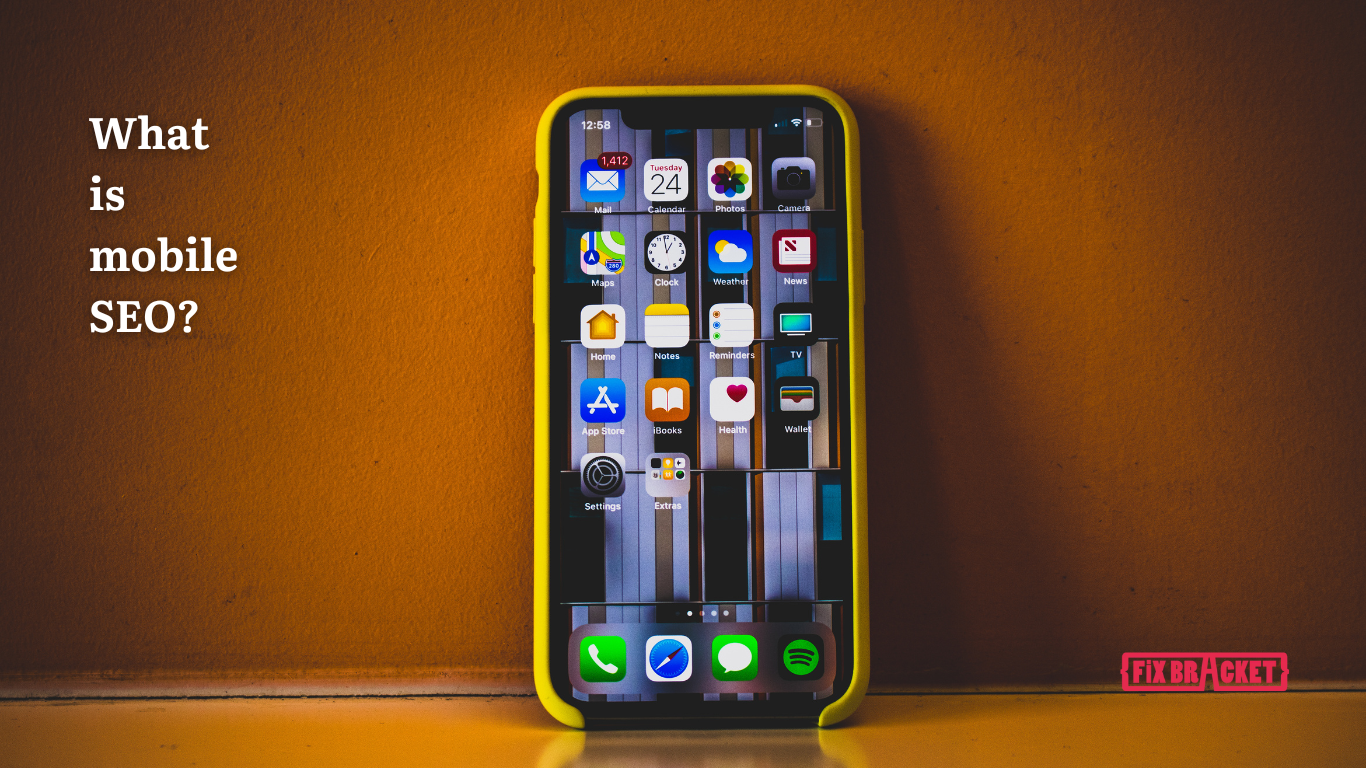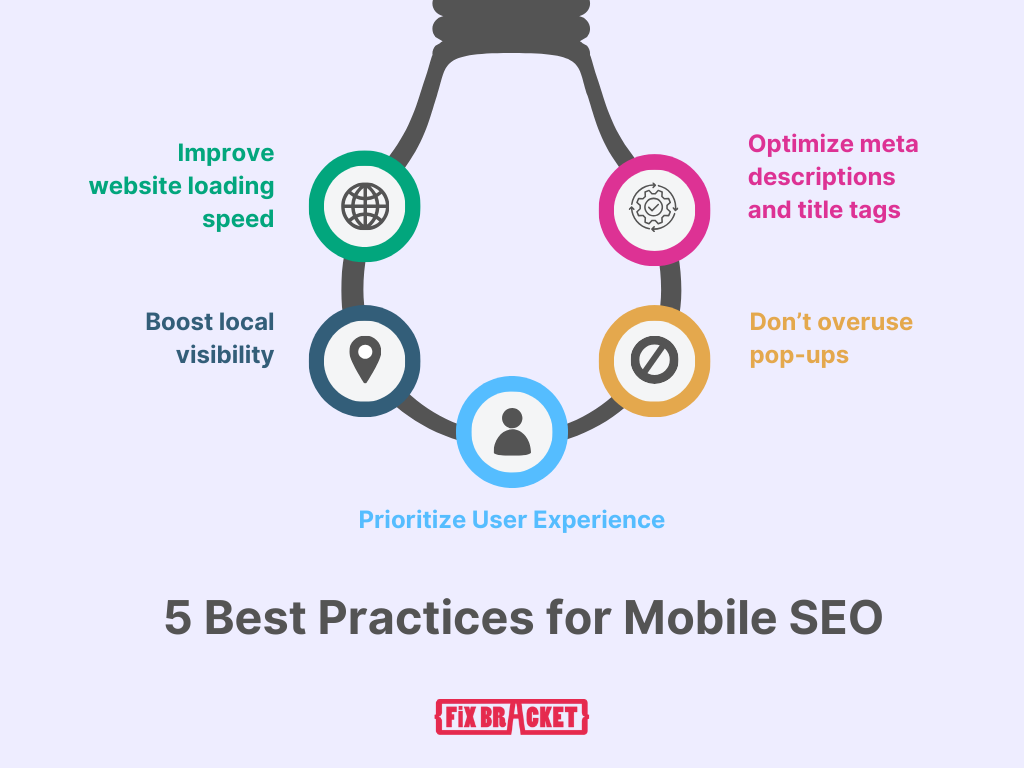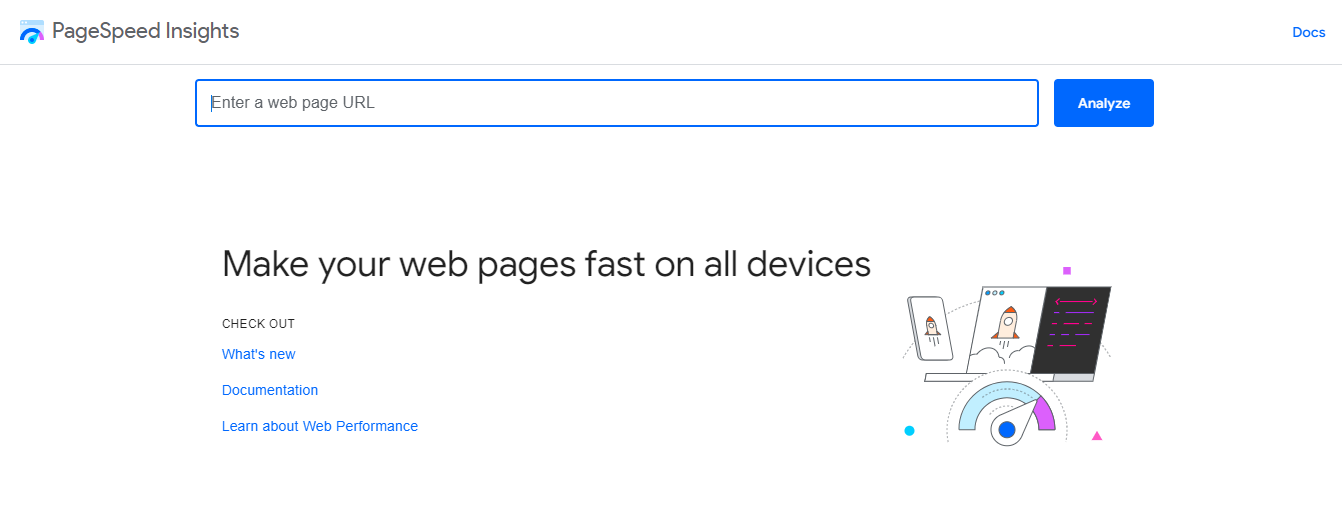
Image source: Freepik.com
Check out this cool fact: over 40% of online transactions happen on mobile devices. That’s why tons of brands these days are all about that responsive web design life. It’s a game-changer, especially in the world of mobile SEO.
But, hold up – just having a responsive website isn’t the whole deal.
To get people hooked and turn them into loyal fans, you’ve got to go the extra mile and make sure your site is all decked out for mobile SEO (search engine optimization).
What is Mobile SEO?

In straightforward terms, mobile SEO involves optimizing a website to not only provide an excellent user experience but also to function seamlessly on mobile devices.
The goal of mobile SEO is to ensure a positive experience for site visitors, making your site visually appealing on screens of all sizes.
Mobile search is substantial. Over the past few years, there has been a considerable surge in mobile device usage, with a whopping 76% of consumers using their mobile devices for online shopping. This number is expected to increase further as smart devices become more prevalent.
Unfortunately, many brands underestimate the importance of having a mobile-friendly site until it’s too late. If your website isn’t mobile-friendly, it not only jeopardizes your mobile SEO efforts but also significantly influences how people perceive your business.
A significant 67% of users have reported being less likely to engage with brands that provide a poor mobile experience. Businesses must recognize the significance of mobile optimization in today’s digital landscape.
Here’s Why Mobile SEO Is Important
The significance of mobile SEO for businesses is beyond dispute. Let’s dive into some pertinent stats to underscore the impact of mobile SEO:
An overwhelming 70% of people choose mobile devices for their online activities. It’s clear: optimizing for mobile is key to ensuring a positive user experience.
Ignoring mobile adaptation could mean waving goodbye to a substantial chunk of potential leads, thanks to a subpar mobile experience.
Here’s a compelling figure: at least 67% of users are inclined to purchase if a brand is mobile-friendly. Simply put, a mobile-friendly website can significantly boost your conversion rates.
The story doesn’t end there – a satisfying mobile experience not only seals the deal but also increases the likelihood of users making a return visit to your site.
5 Best Practices for Mobile SEO to Keep in Mind

1. Give attention to boosting your website’s loading speed.
The time it takes for your site to load plays a pivotal role in delivering a seamless mobile experience, especially in the realm of Google search. When users are on the move and seeking information, they expect immediate access. If your site is sluggish, be prepared for a significant spike in your bounce rate.
To keep your audience engaged and ensure they stick around, prioritize the enhancement of your site’s loading speed. A handy tool like Google PageSpeed Insights can provide insights into your site’s loading time.

Google Pagespeed Insights – Home Page
Utilize this tool to assess specific areas where your site may need improvement. If diving into coding adjustments isn’t your forte or time is a constraint, considering professional assistance is a wise move.
2. Boost Your Website’s Visibility for Local Searches
In recent times, local SEO has become a game-changer in the realm of mobile SEO. We’ve witnessed a surge in mobile searches with phrases like “near me,” indicating a growing trend of users seeking local businesses.
People are now using search terms like “open now,” “where can I buy,” and “near me” to discover nearby businesses. As more individuals engage in local searches on their mobile devices, it’s essential to tweak your strategy to connect with this audience effectively.

Google search trends on ‘near me’, ‘can I buy’, and ‘to buy’
(source: Think With Google)
Make the most of local searches by incorporating local keywords. For instance, consider using a keyword like “flower shop in Stockholm” to cater to those looking for a local flower shop. Users often structure their searches with the format “flower shop in [city]” when seeking local services.
To enhance the user experience, leverage structured data and showcase reviews or ratings related to your business.
3. Prioritize User Experience
Ensuring a seamless user experience on mobile is crucial, and responsive design plays a key role in achieving this. When your website is easily accessible and navigable on a mobile browser, it contributes to a positive experience for visitors.
However, it’s essential to note that a stellar website goes beyond just incorporating responsive design. While responsive design is a significant aspect of creating a favorable mobile experience, there are other elements to consider for an overall positive user experience.
- User-Friendly Call-to-Action (CTA) Buttons: Your call-to-action buttons are vital in guiding users toward conversion. Make sure these buttons stand out and are easily locatable. Their size should be substantial enough for users to click on without any hassle.
- Readable Fonts: Given that users are viewing your site on smaller screens, it’s crucial to use easily readable fonts. Whether opting for a bolder font or increasing the size, the goal is to ensure legibility for users on mobile devices.
- Thumb-Friendly Design: Design your mobile site with user convenience in mind, particularly when it comes to clicking on elements. Creating a ‘thumb-friendly’ design acknowledges that users often use their thumbs for browsing, making it easy for them to interact with your page.
4. Be Mindful with Pop-Ups
Pop-ups can be a great way to grab your user’s attention for a specific action, whether it’s encouraging them to download free content or subscribe to emails. Many brands leverage pop-ups strategically to guide site visitors toward particular actions.
These pop-ups can be triggered by specific user actions, such as entering the page, scrolling to a certain point, or moving the mouse to the search results. While they are effective in drawing attention and conveying crucial information, there’s a catch, especially for those browsing your site on mobile devices.
When pop-ups take up a significant portion of the screen on mobile devices, it can be frustrating for users. They might interfere with the user experience and prompt visitors to exit your website. To avoid driving people away, it’s crucial to use pop-ups judiciously.
As a general guideline, don’t overload your site with too many pop-ups. Instead, use them sparingly and specifically on pages where they can make the most impact.
Additionally, ensure that site visitors can easily dismiss a pop-up with a clear and prominent “x” option. This way, you strike a balance between engaging your audience and respecting their browsing experience.
5. Enhance your meta descriptions and title tags
Make sure to fine-tune your title tags and meta descriptions—they’re crucial elements for optimization. With mobile users seeking quick access to information, these tags play a significant role in influencing whether they click on your listing or not.
- Meta description: This is the brief description that follows your title tag, providing users with additional information about your listing and a sneak peek of your page. Crafting concise yet informative meta-descriptions increases the likelihood of more clicks to your site.
- Title Tags: The first thing that catches a user’s eye in search results is the title tag. It acts as a guide, telling your audience what your page is all about. A stellar title incorporates relevant keywords, with these keywords ideally positioned at the beginning of the tag. This way, users can swiftly determine if the content aligns with their search.
Conclusion
Making sure your business is visible on mobile devices is a big deal in the online growth game. If you’re not sure how to jazz up your site for mobile searches, don’t be afraid to bring in the experts. They know the ropes, leaving you free to tackle the pressing parts of your business that need your hands-on attention.
People Also Read:
How Does Link-Building Strategy Work For SEO?
Reddit Betting on AI Keyword Research Tool For SEO.
9 Actionable Tips For SEO Beginners
Top 10 WordPress SEO Plugins In 2024




